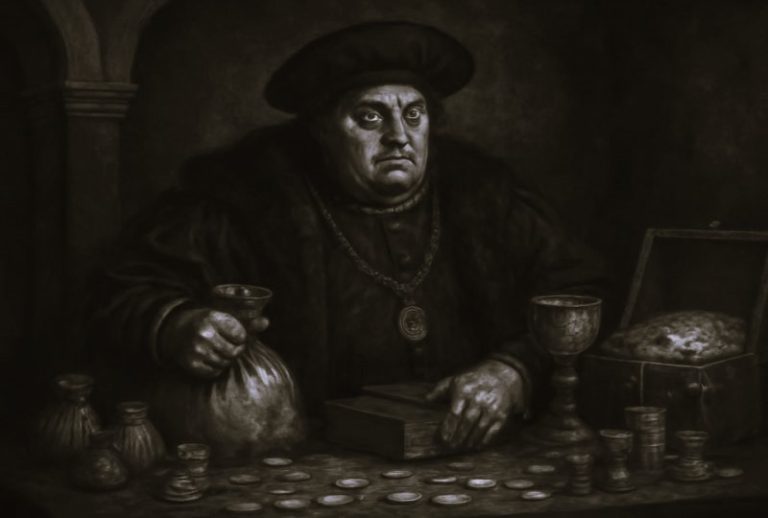

Vampire fiction as class allegory predates Dracula.

By Dr. Daniel Renshaw
Lecturer in History
University of Reading
In May 1897 Constable and Co published a limited print run of a new novel by a London-based Irish theatre manager and occasional author named Bram Stoker. Stoker had enjoyed moderate critical recognition with a series of overly-sentimental pot-boilers and ghoulish short stories over the course of the 1890s; there was nothing initially to indicate that this new effort would be any more successful. This new title was odd, and exotic, Dracula, with an equally unusual subtitle – The Undead.
Early reviews were mixed but generally positive. One made the bold claim that ‘It is splendid… No book since Mrs Shelley’s Frankenstein or indeed any other at all has come near yours in originality or terror – Poe is nowhere.’ The critic, it must be noted, was somewhat biased … she was Bram Stoker’s mother, Charlotte![1]

There was nothing to indicate in 1897, or indeed by Stoker’s death in 1912, that Draculawas an exceptional work, or very different from the other texts constituting the body of literary late-gothic popular fiction, some good, some gruesome, and some banal. Yet Dracula has become a dominant modern myth, the cloaked vampire count perhaps theicon of twentieth century popular culture.[2]
On the 120th anniversary of Dracula’s publication popular fascination, fuelled by countless cinematic adaptations, had not abated. The raw sexuality of the story (which by all accounts Stoker seemed to be unware of) continues to dominate perceptions and interpretations of the text. [3] But Dracula has also been read as: a religious parable; an exercise in Freudian psychology; a condemnation of or argument in support of female empowerment; and a warning of the consequences of Eastern European immigration.[4] Perhaps it is this ambiguity that explains the continued success of the novel. Dracula, and the vampire myth more generally, has also been read as a narrative on class relations and the struggle between capitalism and labour. It is this context that we shall examine below, with sharpened stake and cloves of garlic ready at hand, should they be needed.
Vampire fiction as class allegory predates Dracula. The means by which vampires feed not only has sexual and Freudian subtexts, but is also a powerful representation of a classically exploitative relationship – one body drawing strength whilst the other weakens – and Marxist writers were not slow in appropriating this imagery. Crucially, the vampire is also aristocratic, unlike, for example, the lumpen-proletariat Frankenstein Monster.[5] Early vampires in Balkan folklore may have been re-animated peasants, but by the time the vampire novel emerged in the early-nineteenth century the classic undead was very much from the noblesse.[6] John Polidori, in The Vampyre (1819), made his bloodsucker a member of the British nobility (in fact based upon Lord Byron). Carmilla, in Sheridan Le Fanu’s seminal 1872 novella of the same name, is also an aristocrat. In addition, whilst Carmilla has an exploitative if romantic relationship with the heroine of the novel, Laura, who is also upper class, for day-to-day (or night-to-night) sustenance she feeds on local peasant girls – victims whom she at one point dismisses as worthless and expendable.[7] In Good Lady Ducayne, written by Mary E. Braddon a year before Dracula, an incredibly aged and wealthy lady is sustained by transfusions of blood from various lower-class companions.[8] The motif of aristocratic exploitation in vampire fiction therefore long predated Dracula’s depredations of the local Transylvanian peasantry (and then their urban counterparts in London). When the socialist writers of the mid- to late- nineteenth century cast around for a powerful and instantly recognisable symbol of economic exploitation, they did not have far to look.

Christopher Frayling, in a masterful essay on the evolution of the nineteenth-century vampire story, concludes by discussing how Karl Marx – who relaxed after a hard day in the British Museum by reading French ghost stories – used the language of the vampire in Das Kapital. ‘Capital is dead labour’, he wrote, ‘that, vampire-like, only lives by sucking living labour, and lives the more, the more labour it sucks.’ He referred to ‘the were-wolf’s hunger for surplus labour’, and to the fact that ‘the prolongation of the working day quenches only in a slight degree the vampire thirst for the living blood of labour.’[9]
Years after the completion of Das Kapital, the American socialist and writer Jack London, when searching for suitable language to describe strike-breakers in industrial disputes, fell back on the following imagery: ‘After God had finished the rattlesnake, the toad, and the vampire, he had some awful substance left with which he made a scab.’ The symbolism crossed over from prose to art. In the engraving Capitalist Vampire by Walter Crane, produced in 1885 for the Social Democratic Federation, a huge bat, representing ‘capitalism’, ‘religious hypocrisy’ and ‘party politics’ feeds on a prostrate worker, whilst socialism emerges in the distance to do battle with the vampire, just like the end of any good horror story.
Is Dracula itself a socialist text? It is doubtful. Stoker himself was the archetypal late-nineteenth century bourgeois capitalist, and socially conservative. If the Count is an aristocrat, so is Lord Godalming, one of the heroes of the story, and all the rest of Stoker’s brave protagonists come from the professional middle classes. At one point Mina Harker sings the praises of money and the power for good that capital has, and by the end of the novel the social order disrupted by Dracula’s predations is restored.[10] The working class barely feature in the novel, and those that do are essentially joke characters. Yet it is a narrative about exploitation, and the use and abuse of power, as much as a supernatural tale.
In the twentieth century elements of the left have viewed Dracula and the horror story generally, in particular in its cinematic manifestations, with suspicion. The first (unauthorised) film adaption of the story, the German Nosferatu (1922), was condemned by the German Communist Party journal Leipziger Volkszeitunger as ‘wrapping the worker… in a supernatural fog through which he can no longer see concrete reality.’[11] In other words the vampire film was a frivolous distraction for a proletariat that should be concentrating instead on revolution.

Incidentally, it was a political refugee from European turbulence who would, more than any other person, popularise the image of the vampire in the twentieth century. This was Bela Lugosi, actor and socialist, who fled his native Hungary following the failure of an attempted communist revolution and eventually found his way to Hollywood, and silver screen immortality, as ‘Dracula’ in 1931.

More than thirty years after Nosferatu, Nina Hibbin of the Daily Worker had nothing good to say about the 1958 Hammer adaptation of the novel: ‘This film disgusts the mind and repels the senses.’[12] For the Daily Worker, Dracula represented ‘trash’ Hollywood culture imported into Britain a symbol of free market capitalist cultural hegemony from the other side of the Atlantic. Although, in truth, Hammer was a British company, the film was financed by Universal Studios. For the journal of the Communist Party of Great Britain, the vampiric capitalist threat came from California, not Transylvania.

Yet Dracula, and the vampire myth, have both persisted, and continue to be adapted in various mediums in the early twenty-first century. The imagery of the vampire has been utilised by the political left, and condemned by it, but the people’s flag and the vampire’s diet both continue to be the deepest red.
Notes
- Clive Leatherdale, Dracula: The Novel and the Legend (Desert Island Books, Brighton), 1993, p.69.
- David J. Skal, Hollywood Gothic (Faber and Faber, Inc., New York), 2004, Introduction.
- Peter Haining (ed.), The Dracula Scrapbook (New English Library, London), 1976, p.147.
- Sue Chaplin, Gothic Literature (York Press, London), 2011, p.122.
- David J. Skal, The Monster Show: A Cultural History of Horror (Plexus Publishing Limited, London), 1994, p.159.
- Christopher Frayling, Vampyres: Lord Byron to Count Dracula (Faber and Faber Limited, London), 1991, Introduction.
- JT Sheridan Le Fanu, ‘Carmilla’ in In a Glass Darkly (Oxford University Press, Oxford), 1993, p.266.
- Mary E. Braddon, ‘Good Lady Ducayne’ in Richard Dalby (ed.), Dracula’s Brood(Harper, London), 2016, pp.183-209.
- Frayling, Vampyres, p.84.
- Leatherdale, Dracula: The Novel and the Legend, chapter thirteen.
- Skal, Hollywood Gothic, p.88.
- Marcus Hearn and Alan Barnes, The Hammer Story (Titan Books, London), 2007, p.31.
Originally published by Reading History, 05.16.2017, under the terms of a Creative Commons Attribution-NonCommercial 4.0 International license.






